By Eric Vandenbroeck and
co-workers
Why hunter-gatherer societies were
more complex than we previously imagined, and civilization did not start the
places like Greece
As we have
seen earlier, despite the fantasies of earlier writers about Archeology in
Mesopotamia, it is notoriously hard to find palaces in the usual sense of the
word. In the Late Uruk period,
"palace" is termed because it is large and has a different plan than
temples. In the Early Dynastic, the "palaces" were designated because
their shapes were not temple-like. In the Third Dynasty of Ur, there were
temples and ziggurats at the end of the third millennium BC, and we have a list
of kings, but where is the palace?
There was a Ciutadella for
public ceremonies, but there are only arguments about the existence of a royal
residence. In Mesopotamia, temples are built and re-built on sacred land. On
the other hand, palaces are personal residences and administrative seats of
rulers who build them in places distant from the palaces of former kings or
historical venues of state ceremonies. Indus Valley city-states look different
from Mesopotamian city-states. They were ruled differently and seemed to have
different rules about how power was exhibited. Their development and collapse
were also different from what they were in Mesopotamia.
No state evolved without the potential
to produce large and regular surpluses that could be stored for years. Base
camps of hunter-gatherers were transformed into relatively long-lasting
villages that subsisted on the emerging plenty and eventually on domesticated
plants and animals. Village agriculture narrowed the choices of resources and
led to population growth. Given the specific biological changes in humans that
prevailed towards the end of the Pleistocene, there was a gradual development,
both in the term's demographic and social sense, that was irreversible. The
growth processes were not characterized by stable systems whose limitations had
to be overcome but by the constant change in unstable post-Pleistocene
societies.
We have elaborated this growth model by
noting that the earliest villages in Mesopotamia persisted as modest
villages for thousands of years, while social roles and identities changed
significantly. From the environment of village life, the circulation of goods
and marital partners led to institutionalized interconnections among unrelated
people and the formation of interaction spheres. Codes of communication and
symbols of shared beliefs allowed and expressed new aspects of cultural
identity among villagers. Specific individuals, nascent elites, began to access
the technology of symbol manufacture and the means of communication and
communication venues such as feasts and ceremonies. Control over these symbols
and esoteric knowledge became a domain of power in these early villages.
The earliest states appeared in the Old
and New World approximately four to five thousand years after the first settled
villages that depended on agriculture. Agricultural villages were the necessary
but not sufficient conditions for the evolution of the earliest states. Towards
the end of the Pleistocene period, which was very cold and dry, Upper
Paleolithic hunters and gatherers had invented new technologies that allowed
them to expand their subsistence strategies and establish campsites. In the
cycles of amelioration of the harsh climatic conditions at the beginning of the
Holocene in Mesopotamia, following 10,000 BC,' natural resources for people
flourished, and bands of people, probably extended families, founded
longer-lasting settlements. These settlements subsisted on the extensive stands
of grasses and other local resources.
Some of these earliest village sites in
the 9000's and 8000's BC, like Abu Hureyra 1
(the early occupation) in Syria and Hallan Çemi in
Anatolia, were pre-agricultural villages, were by no means small (Abu Hureyra was about ten hectares in size).
At Hallan Çemi, considerable feasting
and ceremony occurred - celebrations of residence, as it were. Nemrik, Qermez Dere (both
in northern Iraq), and Abu Hureyrâ and Mureybit (both in Syria), in the later 8000's and
7000s, were villages in which plants and animals were domesticated after the
sites were founded. Domestication occurred not to relieve hunger but as a
process whereby humans increasingly selected, as part of collection,
processing, and reseeding activities, certain genetically recessive traits in
the grasses, such as hardiness of plant stems and seeds, at the expense of
dominant features that allowed stands of grains to reproduce effectively
without human intervention. The seeds from recessive phenotype plants were
quickly collected, then; stored and subsequently planted; fields had to be
weeded to keep out the dominant forms. People also selected smaller and gentler
animals, had more wool, or possessed other traits that made them useful to
sedentary people, who protected them from wild competitors. Some early villages
were impressive features in the landscape. At the site of Göbekli Tepe, megaliths and pillars were erected, some
weighing about 50 tons, indicating the labor of many people, more than could
have existed in any village. Furthermore, there seem to be no domestic quarters
at Göbekli Tepe, and the entire site
"served a mainly ritual function" for those in this region,
settled people, and mobile ones alike.
Thus, it appears that in the 7000's and
early 6000's people founded villages in new niches, both in the natural habitat
zone of wild plants and animals and increasingly to the south along the
Mesopotamian plain and away from the region that was the scene of the first
villages.
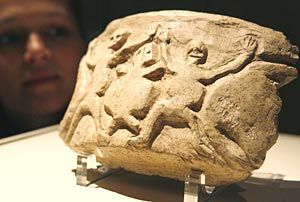
In fact, Göbekli Tepe
is not the only such place. During the 1970s, the Taljanky(1)
and Nebelivka, or Nebelovka,
located in Ukraine, are the site of an ancient mega-settlement dating to 4000
BC belonging to the Cucuteni-Trypillian
culture(Romanian: Cultura Cucuteni and Ukrainian: Трипільська культура), also known
as the Tripolye culture (Russian: Трипольская
культура), is a Neolithic–Eneolithic archaeological
culture (c. 5500 to 2750 BCE) of Eastern Europe.
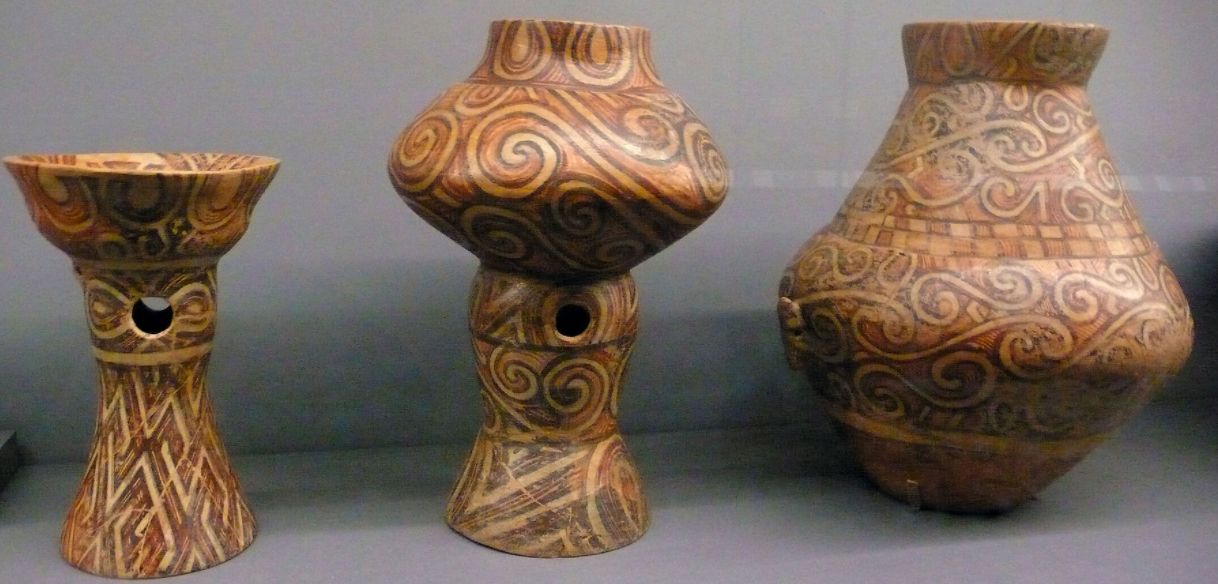
It extended from the Carpathian Mountains to the
Dniester and Dnieper regions, centered on modern-day Moldova and covering
substantial parts of western Ukraine and northeastern Romania.
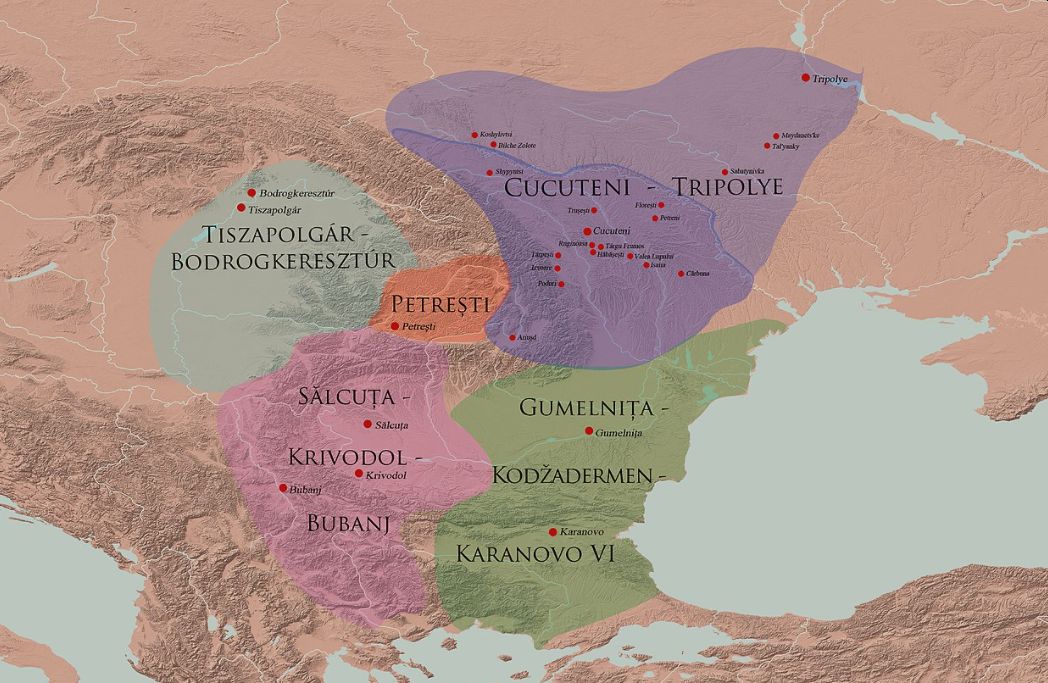
A millennium and a half after Göbekli Tepe, once called Asia Minor now Anatolia, about
8,000 people settled in Catalhöyiik. No longer
living as hunter-gatherers, as did the people surrounding Göbekli
Tepe, the Catalhöyiik people grew wheat, barley,
lentils, and peas, and they herded sheep and goats. A group of larger figures,
made of clay, were found in a single building and dated to around 7,500 years
ago. A fat woman seated in a chair; between her feet protrudes a small human
head, presumably a child to whom she has just given birth; the arms of the
chair are formed by two large standing cats, whose tails curve up over her
shoulders; her hands rest on their heads. It should be empesised
however that both sexes are shown in the of Catalhöyiiki
including sites like Nevalli Cöri
in the same region. Anthropologists believe that the female figures
are meant to be deities in a way that the male figures are not. But
wathever the final evidence will proof the following
item dating from six thousand years BC, is from long before Laws of Solon (d.
558 BCE):
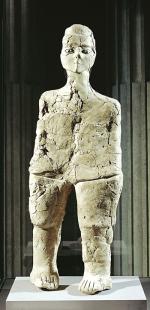
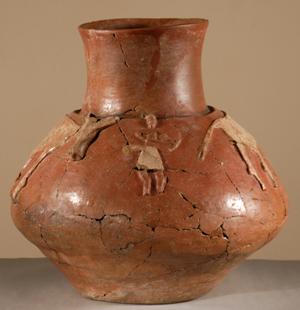
For updates
click homepage here